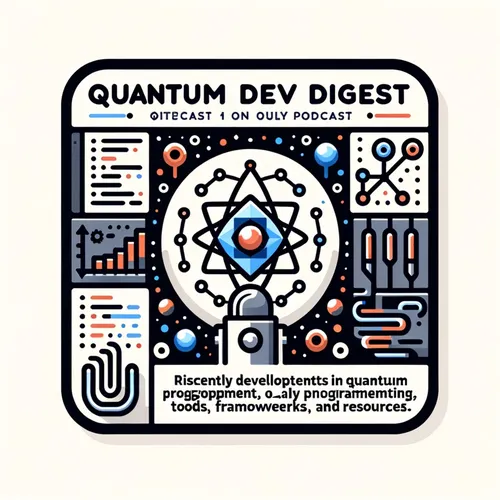Quantum Leap: Entangling Logical Qubits in a Single Atom | Quantum Dev Digest
- Author
- Quiet. Please
- Published
- Mon 25 Aug 2025
- Episode Link
- https://www.spreaker.com/episode/quantum-leap-entangling-logical-qubits-in-a-single-atom-quantum-dev-digest--67507257
This is your Quantum Dev Digest podcast.
Imagine standing inside a lab where lasers shimmer in crisp air, and single atoms seem to pulse with hidden possibilities. It's Leo here—the Learning Enhanced Operator—and today, for Quantum Dev Digest, I want to sweep you straight into the week’s most electrifying quantum breakthrough.
Picture an art conservator painstakingly working on an enormous, centuries-old fresco. Each brushstroke is delicate; every move risks damaging an irreplaceable masterpiece. That’s long been quantum computing: a field where every error could spell disaster, and expanding the canvas meant more and more painstaking effort—until now.
Over the weekend, quantum scientists at the University of Sydney shattered a fundamental scaling barrier by squeezing not one, but two error-protected logical qubits—using the Gottesman–Kitaev–Preskill, or GKP, code—into a single trapped ytterbium ion. But the real feat? They entangled those qubits inside that lone atom, implementing a universal gate. In quantum, that’s the holy grail: a Rosetta stone qubit, with dramatically less hardware overhead. Published in Nature Physics, this marks a leap toward quantum computers built less like fragile crystal palaces, and more like robust, scalable metropolises.
Here’s an analogy. Imagine traditional quantum error correction as city-wide powerlines strung everywhere, each home needing its own line. Sydney’s new logic gate is battery tech so advanced, each block needs only a single line to power all homes—massively cutting infrastructure, but keeping the lights on for everyone. The upshot? We’re edging closer to quantum devices that’ll actually fit, literally and metaphorically, on the workbenches of real-world developers and manufacturers.
This ties into other hot news—at Columbia Engineering, researchers just unveiled HyperQ: virtualization for quantum processors. Imagine a future where multiple users queue up programs on the same quantum hardware, just like sharing cloud servers today. Suddenly, quantum access is democratized, accelerating research and lowering costs for applications from materials science to energy optimization.
And let’s not forget the dramatic development from the University of Southern California—where a neglected mathematical object, the ‘neglecton’, was revealed as transformational for topological quantum computing. That’s like discovering a forgotten chess piece under your couch that unlocks moves across the whole board. Topological systems promise error resistance by weaving quantum information into global patterns, not just fragile local details.
All these fronts—atom-efficient error correction, scalable access via HyperQ, and topological stability—scream one thing: quantum isn’t just theoretical anymore. It’s forming the roots for technologies that make classical supercomputers look quaint.
If today’s rapid-fire advancements have you buzzing with questions, or if there’s a burning topic you’d like discussed right here on Quantum Dev Digest, just send an email to [email protected]. Don’t forget to subscribe for your weekly slice of quantum reality. This has been a Quiet Please Production. For more, check out quiet please dot AI. Until next time—keep questioning, and keep imagining quantum possibilities within your own world.
For more http://www.quietplease.ai
Get the best deals https://amzn.to/3ODvOta
